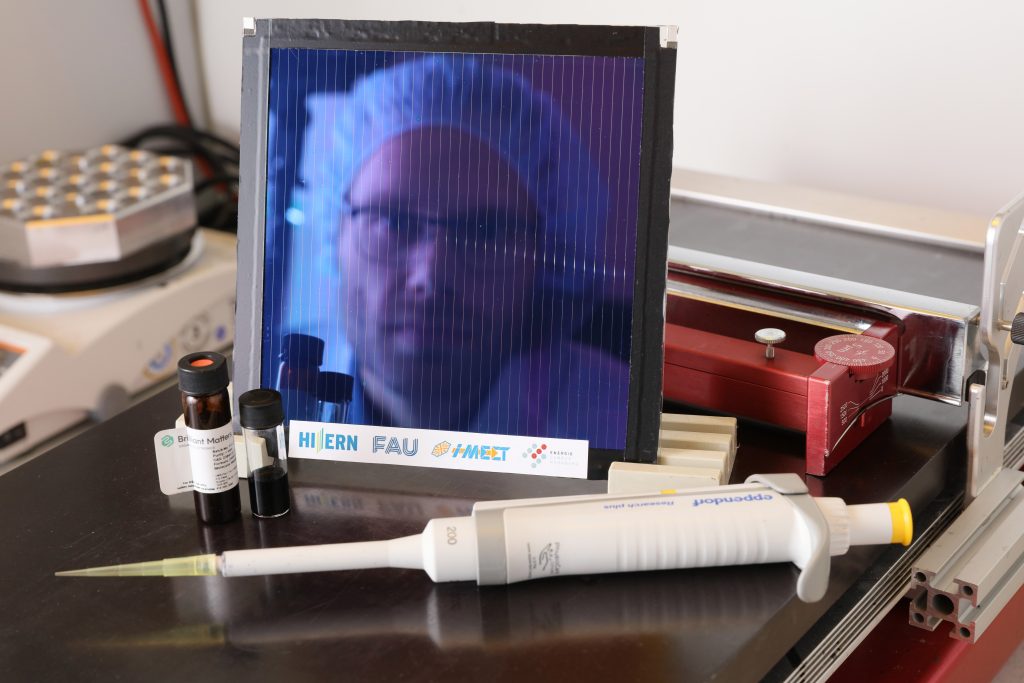We are holding the world record in Organic Solar Module Efficiency for the third time!

The quest for the perfect material in photovoltaics is ongoing, with a focus on overcoming the limitations of traditional silicon-based modules. i-MEET team is leading the charge to establish organic photovoltaics (OPV) as a viable alternative. OPV modules, known for their flexibility and transparency, can be integrated into windows, facades, indoor spaces, or even used as coverings in agricultural fields. Advantages of OPV are their flexibility and transparency, integration into various applications, lower ecological footprint in manufacturing and recycling
Dr. Andreas Distler, Group Leader at the Solarfabrik der Zukunft (SFF), has successfully constructed an OPV module with a certified record efficiency, surpassing our previous achievement and setting a new world record.
Key Achievements:
– Sustainable Processing: The entire manufacturing process, from the active layer to charge extraction layers, was conducted using non-halogenated solvents and in ambient air conditions. This environmentally friendly approach ensures scalability for industrial applications.
– High Reproducibility: Certification of three modules with similar efficiency levels highlights the reliability and reproducibility of our manufacturing process.
– Efficiency Metrics: The OPV module achieved an outstanding efficiency of 15.0% on the active surface, with a geometric fill factor of 96.4%. This sets a new certified record for OPV modules of 14,46% efficiency, surpassing the previous world record of 13.1% held by Waystech.
Critical Developments:
– Improved Active Materials: Enhanced active materials played a pivotal role in achieving higher efficiency.
– Reduced Inactive Areas: Optimized laser structuring processes minimized inactive module areas, achieving an exceptional 96.4% geometric fill factor.
– Coating Homogeneity Optimization: Collaborating with Technische Hochschule Nürnberg (THN), specifically with the “Computational Physics for Green Energy (CP4GE)” group, simulations were employed to enhance coating uniformity.
Congratulations to Andi and Robin!

